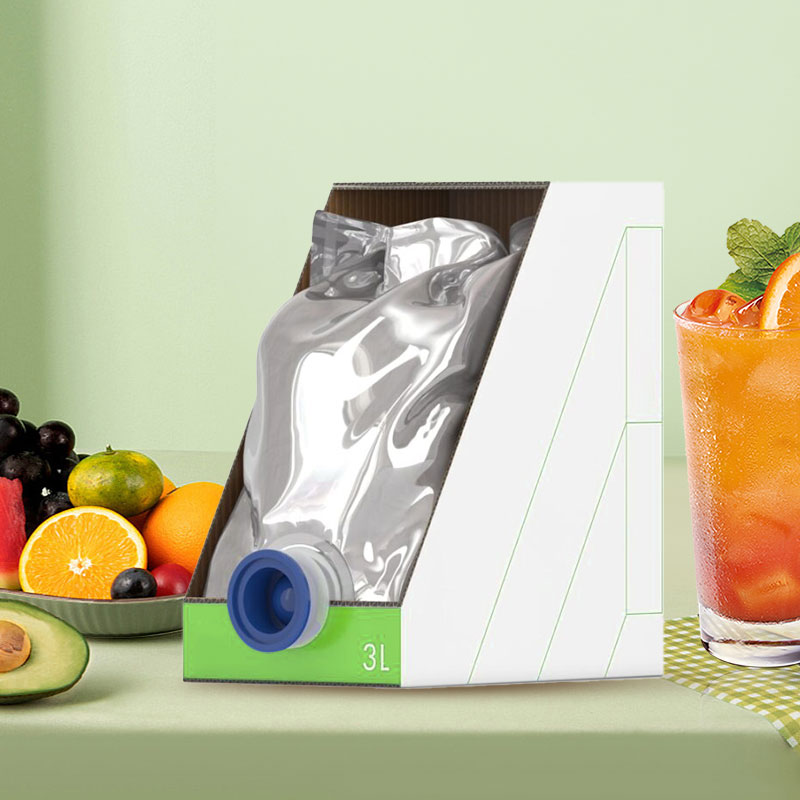 Tel: +86 188 2689 9458
Tel: +86 188 2689 9458
 Tel: +86 188 2689 9458
Tel: +86 188 2689 9458
source:Industry News release time:2024-03-11 Hits:

(1) Paper-aluminum-plastic composite film
Sterile bricks: have certain sealing, moisture-proof and waterproof properties, low cost, light weight, easy to carry and transport, but cannot be heated and sterilized.
(2) Plastic composite film
Packaging bags: Commonly used are composite film materials containing high barrier materials such as EVOH and PVDC, which have good barrier properties, low cost, and are easy to transport and carry.
(3) Plastic containers
Plastic bottles: Common plastic bottle materials include HDPE, PP, PET or PETP, etc., which have good mechanical strength and air tightness. Among the above material structures, PET bottles have higher barrier properties.
(4) Metal containers
It has excellent barrier properties and light-shielding properties, allowing packaged beverages to have a long shelf life. However, improper transportation may lead to extrusion deformation and poor chemical stability.
Aluminum alloy: mostly two-piece cans, mostly used for packaging carbonated drinks.
Tinplate: mostly three-piece cans, often used for packaging non-carbonated beverages.
(5) Glass container
l Glass bottles: good barrier properties, airtight, heat-resistant, pressure-resistant, and cleaning-resistant. They can be sterilized at high temperatures and stored at low temperatures. However, they are not easy to transport, are heavy in weight, easy to be damaged, and have poor printability. Often used to package fruit tea, jujube juice and other beverages.
Read recommendations:
China Factory Baby Complementary Food Spout Pouch Baby Food Fruit Puree Bag With Spout Packaging Bag
Introduction to the functions, features and usage of spout bags
The characteristics and necessity of anti -ultraviolet packaging bag
Popular recommendation
Eco Friendly Plastic Mylar Pouch Stand Up 50ml 100ml 200ml 250ml Custom Aluminum Spout Pouch
Hot Sale BPA Free Plastic Drink Juice Fruit Liquid Packaging Stand Up Bag Spout Pouch
Custom Laminated Printing Juice Bag Liquid Packaging Stand Up Plastic Water Spout Pouch
bag in box wholesale
bag in box packaging wholesaler
new super pouch custom
spout pouch serves
pouch with handle manufacture
printed snack food bags manufacture
packaging spout pouch
How to test the packaging bag
Bag in Box: Provide sustainable packaging for your beverages.bag in box for wine
Causes and solutions for the difficulty of aluminum foil bags.aluminum foil bag large Production
The printing principle of composite bags!beverage bag manufacturers
Common types of transparent vacuum packaging bags
What are the packaging machinery and equipment?
How to choose aluminum foil vacuum packaging and transparent vacuum packaging can make customers mor
Vacuum packaging bag.food vacuum bag
Application of Aluminum Foil Ton Bag.aluminum foil bag price
Different products have different standard requirements for composite packaging.stand up coffee pouc
Use degradable plastic bags to reduce ecological pollution
Production environment for sterile bags
Knowledge of anti-static packaging bag
What are the types of dog food bags?bag for food packaging.food packaging pouch suppliers
The application of bag in box in daily life.aseptic bag in box
We should choose genuine food packaging bags
The benefits of aluminum foil bags.zip lock aluminum foil bag
How to choose plastic packaging bags specifically.petco free dog food bag wholesale
What are some issues to pay attention to when customizing food packaging bags?
What is food packaging bag qs?